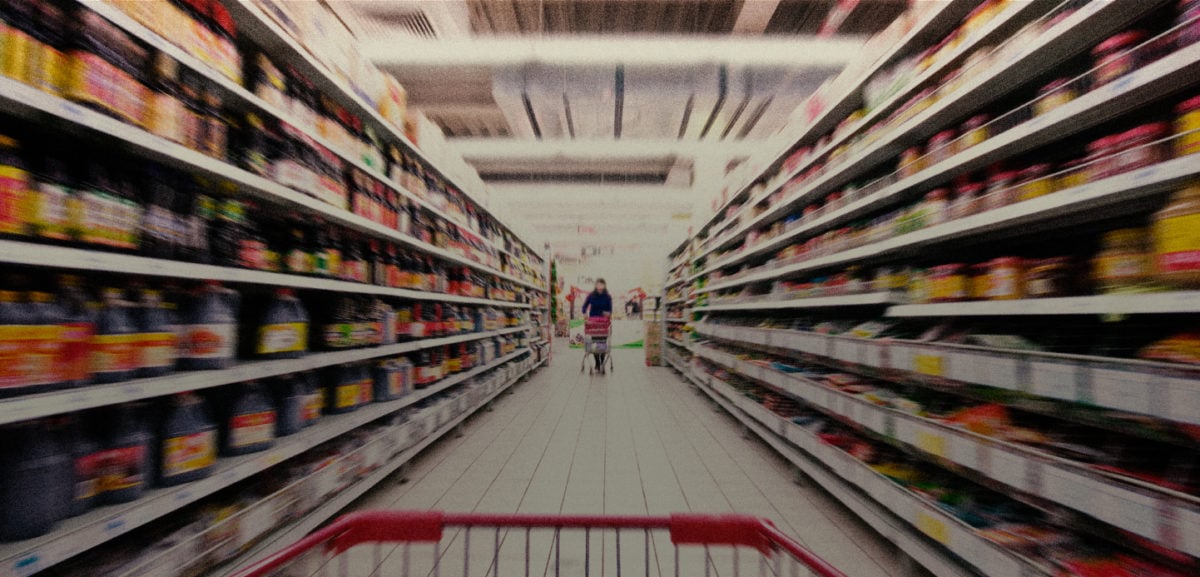Initiative Overview and Strategic Alignment with Sustainable Development Goals
A strategic initiative has been launched to enhance the added value of Thai agricultural products for both domestic and international markets. A pop-up counter, operational until September 21, 2025, at King Power Rangnam, serves as the primary platform for this endeavor. The project is designed to sustainably improve the quality of life for Thai farmers and entrepreneurs, directly contributing to several key Sustainable Development Goals (SDGs).
Contribution to SDG 8 (Decent Work and Economic Growth) and SDG 1 (No Poverty)
The Ministry has articulated a commitment to transforming basic agricultural commodities into high-value innovations. This is guided by a core strategy described as “market-led, innovation-driven, income-enhancing.” The principal objectives of this strategy are:
- To substantially increase farmers’ incomes, directly addressing SDG 1 (No Poverty).
- To strengthen Thai agricultural innovation entrepreneurs, particularly Small and Medium-sized Enterprises (SMEs), enabling them to compete sustainably in global markets and fostering inclusive economic growth as outlined in SDG 8 (Decent Work and Economic Growth).
Product Innovation and Responsible Consumption
The initiative showcases over 60 innovative agricultural products from more than 30 entrepreneurs. Each product reflects a synthesis of nature, technology, and innovation, designed to meet the demands of modern consumers who prioritize health, environmental responsibility, and style. This focus aligns with the principles of sustainable development and responsible market practices.
Alignment with SDG 9 (Industry, Innovation, and Infrastructure) and SDG 12 (Responsible Consumption and Production)
The product selection demonstrates a significant advancement in agricultural processing and product development, supporting SDG 9 (Industry, Innovation, and Infrastructure). Furthermore, the emphasis on eco-friendly materials and upcycling promotes sustainable consumption patterns, a core target of SDG 12 (Responsible Consumption and Production). Featured products include:
- Starch-free rice made from seaweed fibre
- Herbal effervescent tablets with fruit flavours using Thai GI ingredients
- Organic Lanna purple rice granola
- Compressed mango sticky rice snacks
- Thai herbal compress ball gel cream
- Herbal toothpaste tablets
- Upcycled bags and shoes made from rice straw
Key Objectives and Strategic Partnerships (SDG 17)
The long-term vision of the project is to establish a robust and competitive high-value agricultural sector. The collaboration between government bodies, private sector entrepreneurs, and major retail partners exemplifies a multi-stakeholder approach, which is critical for achieving the SDGs.
Primary Goals and Contribution to SDG 17 (Partnerships for the Goals)
The initiative’s success is predicated on achieving a set of interconnected goals, facilitated by strong partnerships as championed by SDG 17:
- Transform the agricultural sector from commodity-based to innovation-led, enhancing industrial capacity (SDG 9).
- Create sustainable livelihoods and increase income for farmers and entrepreneurs (SDG 1, SDG 8).
- Promote the development and consumption of sustainable and eco-friendly products (SDG 12).
- Strengthen the position of Thai SMEs in the global marketplace through strategic public-private partnerships.
Analysis of Sustainable Development Goals (SDGs) in the Article
1. Which SDGs are addressed or connected to the issues highlighted in the article?
The article highlights issues and initiatives that connect to several Sustainable Development Goals. These goals focus on economic growth, innovation, sustainable production, and poverty reduction, all of which are central themes of the project described.
-
SDG 1: No Poverty
The initiative’s stated aim to “sustainably improve the quality of life for Thai farmers” and “increase farmers’ incomes” directly addresses the goal of ending poverty in all its forms.
-
SDG 2: Zero Hunger
While not focused on hunger, this SDG also aims to end hunger, achieve food security and improved nutrition and promote sustainable agriculture. The article’s focus on enhancing the value of agricultural goods, increasing farmer incomes, and promoting sustainable practices aligns with the agricultural aspects of this goal.
-
SDG 8: Decent Work and Economic Growth
The project’s commitment to “transforming Thai agricultural products from basic commodities into high-value innovations” and strengthening “SMEs, to compete confidently and sustainably in global markets” directly supports promoting sustained, inclusive, and sustainable economic growth.
-
SDG 9: Industry, Innovation, and Infrastructure
The core of the article revolves around innovation. Phrases like “innovative agricultural products,” “blend of nature, innovation, and technology,” and the “market-led, innovation-driven” concept clearly connect to building resilient infrastructure, promoting inclusive and sustainable industrialization, and fostering innovation.
-
SDG 12: Responsible Consumption and Production
The mention of products designed for “eco-friendly” consumers and the specific example of “upcycled bags and shoes made from rice straw” point directly to ensuring sustainable consumption and production patterns by reducing waste and promoting sustainable products.
2. What specific targets under those SDGs can be identified based on the article’s content?
Based on the initiatives described, several specific SDG targets can be identified:
-
Target 2.3: Double the agricultural productivity and incomes of small-scale food producers.
The article explicitly states the aim is to “increase farmers’ incomes,” which directly aligns with this target’s objective of improving the economic well-being of small-scale agricultural producers.
-
Target 8.2: Achieve higher levels of economic productivity through diversification, technological upgrading and innovation.
The initiative’s strategy to transform “basic commodities into high-value innovations” by using technology is a clear example of working towards this target.
-
Target 8.3: Promote development-oriented policies that support productive activities… entrepreneurship… and encourage the formalization and growth of micro-, small- and medium-sized enterprises (SMEs).
The project focuses on strengthening “Thai agricultural innovation entrepreneurs, particularly SMEs,” which is the central theme of this target.
-
Target 9.3: Increase the access of small-scale industrial and other enterprises… to value chains and markets.
Providing a “pop-up counter… at King Power Rangnam” for “over 30 entrepreneurs” is a direct action to integrate small-scale enterprises into a major retail market and value chain.
-
Target 12.5: By 2030, substantially reduce waste generation through prevention, reduction, recycling and reuse.
The creation of “upcycled bags and shoes made from rice straw” is a specific example of reducing agricultural waste through reuse and upcycling, directly contributing to this target.
3. Are there any indicators mentioned or implied in the article that can be used to measure progress towards the identified targets?
The article mentions or implies several quantitative and qualitative indicators that can be used to track progress:
-
Income of small-scale producers
The goal to “increase farmers’ incomes” implies that a key indicator for measuring success would be the average income of the participating farmers (relevant to Target 2.3).
-
Number of participating enterprises
The article specifies “more than 30 entrepreneurs” are involved. This can be used as a direct indicator of the number of SMEs and entrepreneurs supported by the initiative (relevant to Target 8.3).
-
Number of innovative products
The mention of “More than 60 innovative agricultural products” provides a baseline indicator. Progress could be measured by the number of new, high-value products developed and commercialized (relevant to Target 8.2).
-
Value addition to agricultural products
The primary goal is to “enhance the added value of Thai agricultural goods.” This implies an indicator related to the increase in the market value of processed agricultural goods compared to their raw commodity price (relevant to Target 8.2).
-
Waste reduction/upcycling
The example of “upcycled bags and shoes made from rice straw” suggests an indicator could be the volume or amount of agricultural waste (like rice straw) repurposed or upcycled into new products (relevant to Target 12.5).
4. Summary Table of SDGs, Targets, and Indicators
| SDGs | Targets | Indicators Identified in Article |
|---|---|---|
| SDG 2: Zero Hunger | 2.3: Double the agricultural productivity and incomes of small-scale food producers. | Increase in farmers’ incomes. |
| SDG 8: Decent Work and Economic Growth | 8.2: Achieve higher levels of economic productivity through diversification, technological upgrading and innovation. 8.3: Promote policies to support entrepreneurship and the growth of SMEs. |
– Number of high-value innovative products developed (over 60). – Number of entrepreneurs and SMEs supported (over 30). |
| SDG 9: Industry, Innovation, and Infrastructure | 9.3: Increase the access of small-scale enterprises to value chains and markets. | Integration of entrepreneurs into a major retail market (King Power pop-up). |
| SDG 12: Responsible Consumption and Production | 12.5: Substantially reduce waste generation through recycling and reuse. | Creation of upcycled products from agricultural waste (e.g., rice straw). |
Source: nationthailand.com







